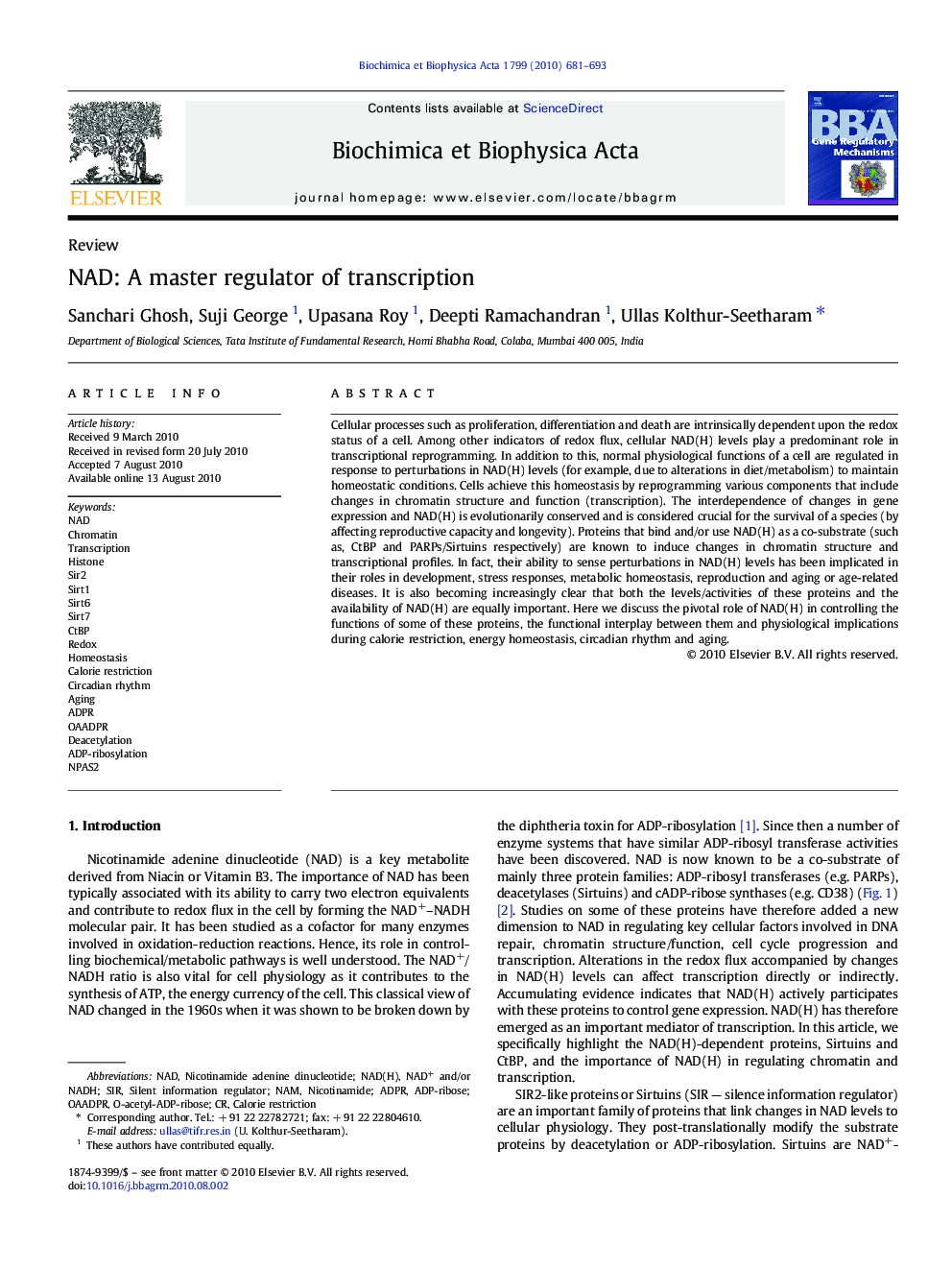| Article ID | Journal | Published Year | Pages | File Type |
|---|---|---|---|---|
| 1946728 | Biochimica et Biophysica Acta (BBA) - Gene Regulatory Mechanisms | 2010 | 13 Pages |
Cellular processes such as proliferation, differentiation and death are intrinsically dependent upon the redox status of a cell. Among other indicators of redox flux, cellular NAD(H) levels play a predominant role in transcriptional reprogramming. In addition to this, normal physiological functions of a cell are regulated in response to perturbations in NAD(H) levels (for example, due to alterations in diet/metabolism) to maintain homeostatic conditions. Cells achieve this homeostasis by reprogramming various components that include changes in chromatin structure and function (transcription). The interdependence of changes in gene expression and NAD(H) is evolutionarily conserved and is considered crucial for the survival of a species (by affecting reproductive capacity and longevity). Proteins that bind and/or use NAD(H) as a co-substrate (such as, CtBP and PARPs/Sirtuins respectively) are known to induce changes in chromatin structure and transcriptional profiles. In fact, their ability to sense perturbations in NAD(H) levels has been implicated in their roles in development, stress responses, metabolic homeostasis, reproduction and aging or age-related diseases. It is also becoming increasingly clear that both the levels/activities of these proteins and the availability of NAD(H) are equally important. Here we discuss the pivotal role of NAD(H) in controlling the functions of some of these proteins, the functional interplay between them and physiological implications during calorie restriction, energy homeostasis, circadian rhythm and aging.
Research highlights► NAD(H) is a key metabolite that links metabolic inputs to gene regulation. ► NAD(H) regulates transcription/chromatin structure through Sirts, PARPs and CtBP. ► NAD metabolites associate with and/or affect chromatin structure. ► NAD(H) is essential for maintaining normal organismal physiology.
